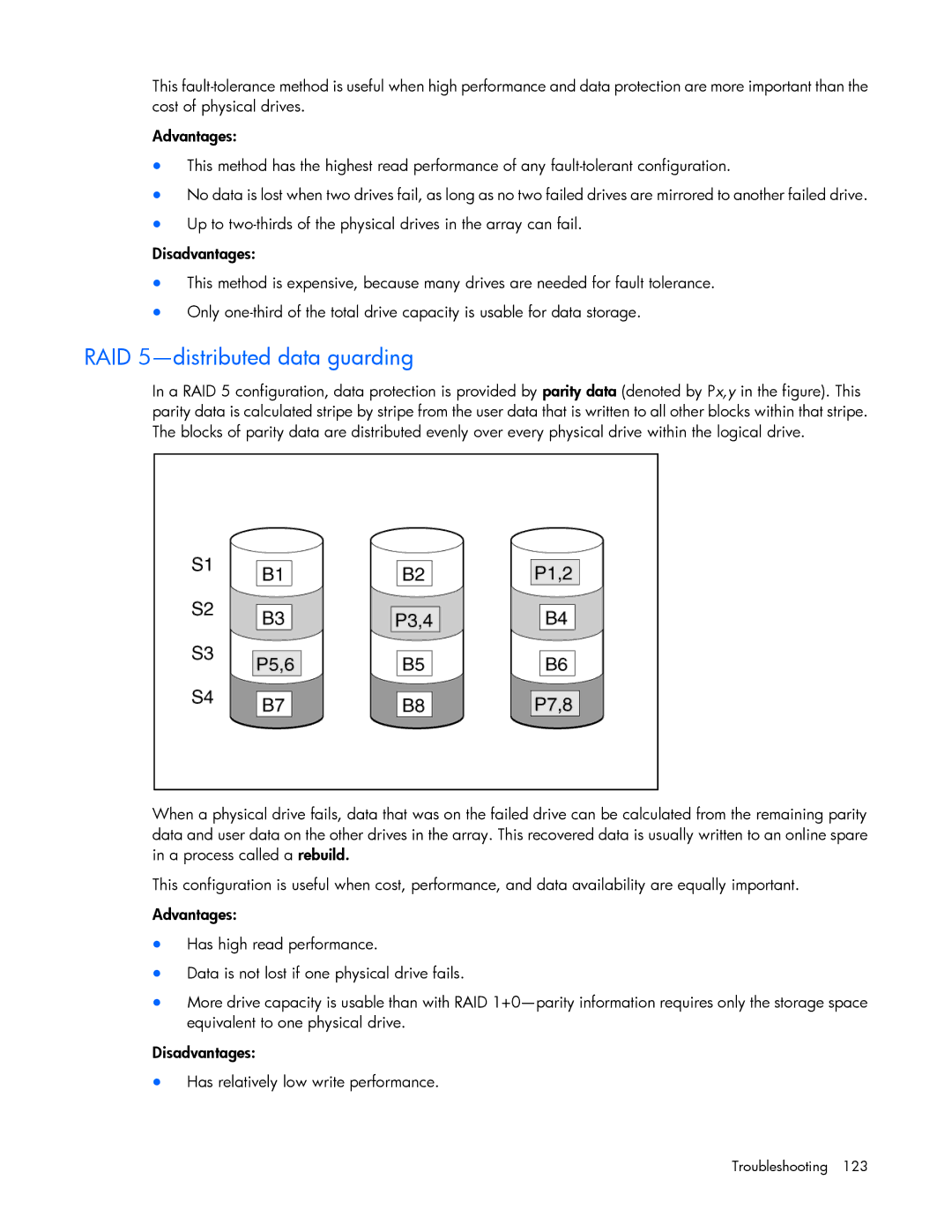
This
Advantages:
•This method has the highest read performance of any
•No data is lost when two drives fail, as long as no two failed drives are mirrored to another failed drive.
•Up to
Disadvantages:
•This method is expensive, because many drives are needed for fault tolerance.
•Only
RAID 5—distributed data guarding
In a RAID 5 configuration, data protection is provided by parity data (denoted by Px,y in the figure). This parity data is calculated stripe by stripe from the user data that is written to all other blocks within that stripe. The blocks of parity data are distributed evenly over every physical drive within the logical drive.
When a physical drive fails, data that was on the failed drive can be calculated from the remaining parity data and user data on the other drives in the array. This recovered data is usually written to an online spare in a process called a rebuild.
This configuration is useful when cost, performance, and data availability are equally important.
Advantages:
•Has high read performance.
•Data is not lost if one physical drive fails.
•More drive capacity is usable than with RAID
Disadvantages:
•Has relatively low write performance.
